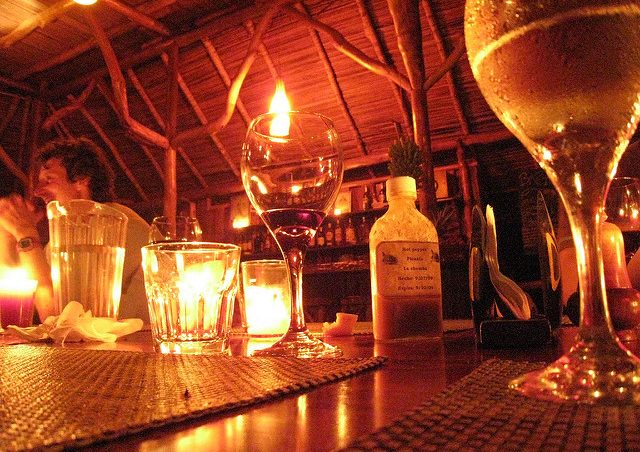If you have spent time traveling in Spanish speaking countries, ordering food at a restuarant is likely one of the most common situations you have encountered.
Here’s a lesson taken from our Spanish Headstart course that will help you learn all you need to know to order food like a native. In this scenario, Bob and his wife Gloria stop into a restaurant for a bite to eat during a trip to Panama City, Panama. This post contains the first half of this scenario and is continued in Part 2.
Press play on the audio below to listen to the conversation, and use the written transcript to follow along below.
Waiter:
Good evening.
Buenas noches.
good evening / good night buenas noches
Bob:
Good evening. A table for two [persons].
Buenas noches. Una mesa para dos personas.
table la mesa
people personas
Waiter:
This way.
Por aquí, señores.
Bob:
The menu, please.
El menú, por favor.
menu menú
Waiter:
Sure. Just a second.
Sí, cómo no. En un momentito.
a brief moment momentito
Waiter:
Here’s the menu.
Aquí tienen el menú.
Are you going to have something to drink?
¿Van a tomar algo, señores?
to drink, to take tomar
you (all) go (to go) van (ir)
you are going to drink van a tomar
something algo
Bob:
Bring me a cuba libre.
Tráigame un cuba libre.
Waiter:
And you, ma’am?
¿y usted, señora?
Gloria:
I’m not going to drink anything.
Yo no voy a tomar nada.
I am going to voy a
Waiter:
What would you like to eat first?
¿Qué desean comer primero?
to eat comer
first primero
Gloria:
I’d like a corvina ceviche.
Yo quiero un ceviche de corvina.
ceviche ceviche
Bob:
And I’ll have a prawn cocktail.
Y yo, un coctel de langostinos.
cocktail coctel
prawns langostinos
Lesson Notes:
- Señores, literally “Sirs” This polite form of address is used even when a woman is included. It usage here is roughly equivalent to, “Sir, ma’am.”
- Tráigame… literally means “Bring me…” and is one of the most common ways to request what you wish to order. A common mistake is to try use a phrase like Puedo tener... literally “Can I have…” but this is incorrect Spanish. Me trae also means “Bring me…” and may be considered a bit more polite.
- A Cuba Libre (literally “Free Cuba”) is a caffeinated alcoholic cocktail made of cola, lime, and rum.
- Yo no voy a tomar nada. Literally, “I’m not going to drink nothing.” Although incorrect in English, the double negative is common and correct in Spanish.
- Ceviche is an appetizer made of marinated raw fish.
- Coctel is also spelled cocktail.
Want access to more practical Spanish lessons like this? Check out Spanish Headstart or our flagship One Month Spanish course.



